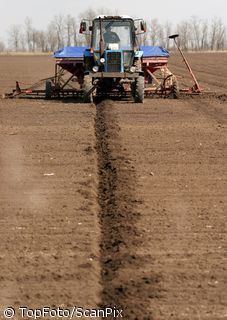The Common Agricultural Policy plays a critical role in helping farmers to deliver environmental goods and services, provided that policies are targeted in the right way.
 |
The Common Agricultural Policy plays a critical role in helping farmers to deliver environmental goods and services, provided that policies are targeted in the right way. This is the key message of a report published today for DG Agriculture and Rural Development by the Institute for European Environmental Policy. The report is a first ever attempt to identify the full range of environmental public goods provided by farmers across Europe and sets out the arguments for paying for their delivery via the public purse. The study identifies a wide range of diverse environmental and social public goods that are provided by European farmers, including valued cultural landscapes 1 ; farmland birds, such as the globally threatened Great Bustard and Imperial Eagle 2 ; and the species-rich meadows that are found across Europe. In addition, farmers manage the land for carbon storage and help to maintain high quality water and soils. The results of this study come at a time when the debate about the future of the CAP is intensifying and when the objectives and priorities of the CAP for the period after 2013 are being discussed. The study concludes that a well targeted policy, with clear objectives and sufficient budgetary resources, will be essential to ensure the delivery of public goods in line with society's expectations.
The study demonstrates that the European public places a high value on these public goods and yet the evidence suggests that they are not being provided on a sufficient scale. It finds that the CAP has a range of measures that help to support farmers in the delivery of public goods. The combination of direct payments and cross compliance supports a basic level of public goods provision across a large proportion of the EU farmed area. Rural Development measures, such as the agri-environment measure, provide the incentives for farmers to deliver a wide range of public goods in a more targeted manner.
The report concludes that many of these public goods are undersupplied. The undersupply of public goods is likely to be accentuated in the future in the face of threats such as trends in commodity prices, technological drivers and the impacts of climate change, suggesting the need for a greater degree of public intervention in the future.
1 :
Including, for example, the unique landscapes of the English hills and moors, the pastoral landscapes in southern Transylvania, Romania, the terraced landscapes characterised by traditional olive production and other permanent crops in Italy and Spain, the high alpine pastures of Austria, southern France and northern Italy, the grazing marshes of Mecklenburg in Germany, and the extensive rice fields of the Ebro Delta, north east Spain.
2 :
Great Bustard ( Otis tarda) and Imperial Eagle ( Aquila heliaca).